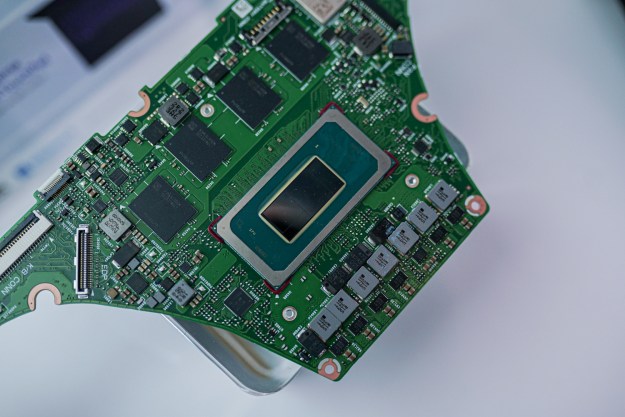
Intel announced a slew of new processors during CES 2024, including mobile and desktop CPUs and the new Intel Core Series 1 made for thin-and-light laptops. Some are destined to make the list of the best processors, but Intel’s naming conventions are only getting more confusing, with machines sporting both its old naming convention and the new Core Ultra rebrand in 2024.
Starting with the Intel Core HX series, Intel is introducing five new CPUs made for gamers and creators, starting with the high-end Intel Core i9-14900HX, followed by the Core i7-14700HX, the Core i7-14650HX, the Core i5-14500HX, and lastly, the Core i5-14450HX. The top chip in the lineup sports a whopping 24 cores and 32 threads.
All of the processors sport Intel’s integrated UHD graphics, but these chips are likely to be paired with some of the top graphics cards, so the iGPU is pretty much irrelevant. They all share the same base TDP of 55 watts and can be boosted up to 157 watts in turbo mode. Intel Core HX processors support up to 192GB of DDR5-5600 memory as well as DDR4-3200.
| Core i9-14900HX | Core i7-14700HX | Core i7-14650HX | Core i5-14500HX | Core i5-14450HX | |
| Cores | 24 (8+16) | 20 (8+12) | 16 (8+8) | 14 (6+8) | 10 (6+4) |
| Threads | 32 | 28 | 24 | 20 | 16 |
| Smart Cache | 36MB | 33MB | 30MB | 24MB | 20MB |
| Max P-core frequency | 5.8GHz | 5.5GHz | 5.2GHz | 4.9GHz | 4.8GHz |
| Max E-core frequency | 4.1GHz | 3.9GHz | 3.7GHz | 3.5GHz | 3.5GHz |
Intel promises to deliver a notable performance leap with these chips, including an up to 17% improvement in gaming and a 51% boost in productivity gen-over-gen. Over 60 laptops equipped with these new processors are expected to arrive in 2024, although Intel hasn’t provided any specifics about models and prices just yet.
Apart from the HX chips, Intel unveiled Core U Series 1 processors aimed at ultrathin laptops, made with productivity in mind. This update brings with it support for up to 10 cores (2 P-cores and 8 E-cores) and 12 threads, as well as Intel’s integrated graphics. The new chips support up to 96GB of DDR5-5200 or LPDDR5/x-6400, but also DDR4-3200 and LPDDR4x-4267. There’s plenty of connectivity, too, including support for Thunderbolt 4 and Wi-Fi 7.
This lineup is smaller, consisting of only three CPUs, each with a base power of 15 watts that can be boosted to 55 watts.
| Intel Core 7 150U | Intel Core 5 120U | Intel Core 3 100U | |
| Cores | 10 (2+8) | 10 (2+8) | 6 (2+4) |
| Threads | 12 | 12 | 8 |
| Smart Cache | 12MB | 12MB | 10MB |
| Max P-core frequency | 5.4GHz | 5.0GHz | 4.7GHz |
| Max E-core frequency | 4.0GHz | 3.8GHz | 1.25GHz |
Laptops equipped with these new chips are set to come out in the first quarter of 2024, and Intel’s partners are likely to reveal more during CES 2024.

Lastly, Intel is expanding its range of desktop processors with more Raptor Lake refresh models, now serving up the entirety of the 13th-gen lineup in its 14th-gen form. All the CPUs are compatible with 700- and 600-series chipsets and utilize Intel’s hybrid architecture. Intel promises support for up to DDR5-5600 memory across the higher end of the product stack.
Although Intel hasn’t shared the full list of models that are coming out, it did say that there’d be 18 new CPUs, so there’s plenty to look forward to. The lineup includes chips like the Core i9-14900 and the Core i7-14700, and the latter is said to come with four extra E-cores compared to its predecessor.
The processors span from the high-end Core i9, through the Core i7 and the Core i5, all the way to the budget Core i3. According to Intel, they’re already available, so keep an eye out for them — they should start appearing in stores shortly.
Editors' Recommendations
- It just became the perfect time to buy a last-gen Intel CPU
- Nice try, Intel, but AMD 3D V-Cache chips still win
- Reviewers agree: Intel’s latest chip is truly ridiculous
- Intel CPU gaming crashes are causing an uproar
- Intel may have a monster new CPU coming soon





